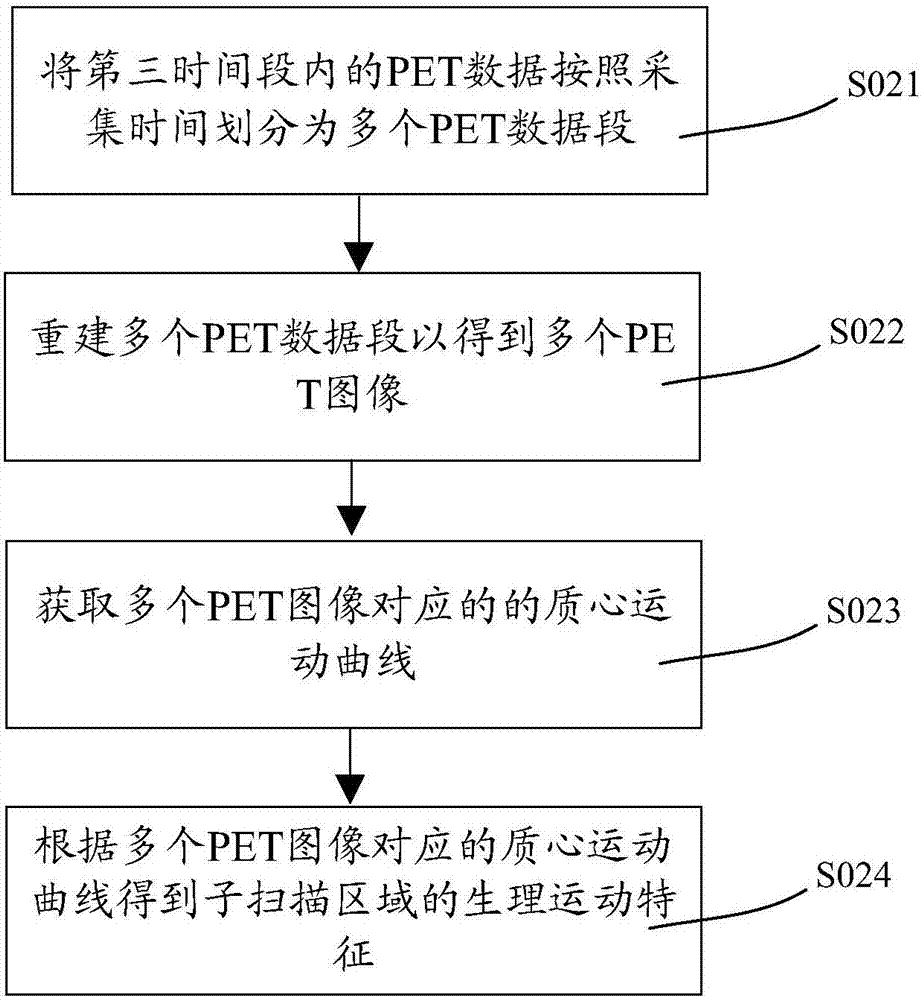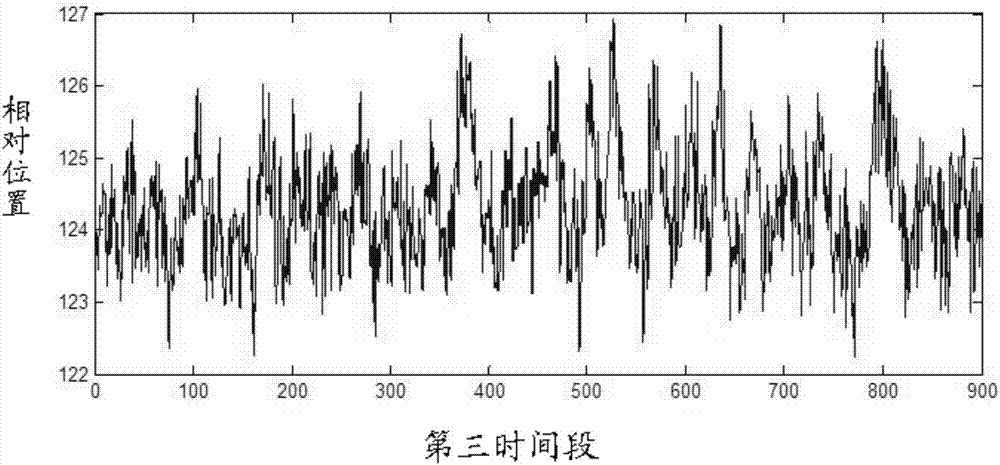PET imaging system and imaging method thereof
An imaging method and image technology, applied in the medical field, can solve the problems of poor user experience, long scanning and image reconstruction time, etc., and achieve the effects of short scanning time, shortening image reconstruction time, and improving efficiency
- Summary
- Abstract
- Description
- Claims
- Application Information
AI Technical Summary
Problems solved by technology
Method used
Image
Examples
Embodiment 1
[0056] figure 1 It is a flow chart of the PET imaging method provided by Embodiment 1 of the present invention, such as figure 1 As shown, the PET imaging method specifically includes the following steps.
[0057] Step S01 is: acquiring PET data of a sub-scan area corresponding to a scan bed within a third time period.
[0058] It should be understood that each sub-scanning area corresponds to a scanning bed, for example, a patient's head corresponds to a scanning bed, the patient's chest and abdomen correspond to another scanning bed, and the patient's lower limbs correspond to the rest of the scanning bed. The corresponding scanning beds constitute double beds. Therefore, the sub-scanning area can be adjusted by changing the scanning bed position. One scanning bed corresponds to one PET scan. After the scanning of one scanning bed is completed, the patient is placed on the examination bed to move to the next scanning bed for PET scanning, that is, the sub-scanning area co...
Embodiment 2
[0103] The principle of the PET imaging method provided in this embodiment is basically the same as that in Embodiment 1, and only the differences will be described below. In this embodiment, a user ID is set for at least one scanning bed, so as to determine whether there is physiological movement in the sub-scanning area corresponding to the scanning bed by reading the user ID of the at least one scanning bed. For example, the same user ID is set for the scanning bed corresponding to the patient's head and the scanning bed corresponding to the patient's lower limbs, and another user ID is set for the scanning bed corresponding to the patient's chest and abdomen, and the two user IDs are different.
[0104] Concrete combination Figure 5 In other words, the PET imaging method of this embodiment replaces the steps S01, S02 and S03 in the first embodiment with steps S21 and S22, and the rest of the steps are the same as those in the first embodiment.
[0105] Wherein, step S21 ...
Embodiment 3
[0109] The principle of the PET imaging method provided in this embodiment is basically the same as that in Embodiment 1, and only the differences will be described below.
[0110] combine Image 6 In other words, the PET imaging method of this embodiment replaces the steps S01, S02 and S03 in the first embodiment with steps S31 and S32, and the rest of the steps are the same as those in the first embodiment.
[0111] Wherein, step S31 is: acquiring a CT positioning image of the sub-scanning area corresponding to the scanning bed.
[0112] Step S32 is: according to the CT positioning image, identify whether there is respiratory movement in the sub-scanning area. Here, if the CT positioning image presents a sub-scan area with physiological movement, then step S04 is performed, otherwise, step S07 is performed.
[0113] In this embodiment, before judging whether there is respiratory movement in the sub-scanning area, the CT positioning image (Topogram, also called Topo image) ...
PUM
 Login to View More
Login to View More Abstract
Description
Claims
Application Information
 Login to View More
Login to View More - Generate Ideas
- Intellectual Property
- Life Sciences
- Materials
- Tech Scout
- Unparalleled Data Quality
- Higher Quality Content
- 60% Fewer Hallucinations
Browse by: Latest US Patents, China's latest patents, Technical Efficacy Thesaurus, Application Domain, Technology Topic, Popular Technical Reports.
© 2025 PatSnap. All rights reserved.Legal|Privacy policy|Modern Slavery Act Transparency Statement|Sitemap|About US| Contact US: help@patsnap.com



